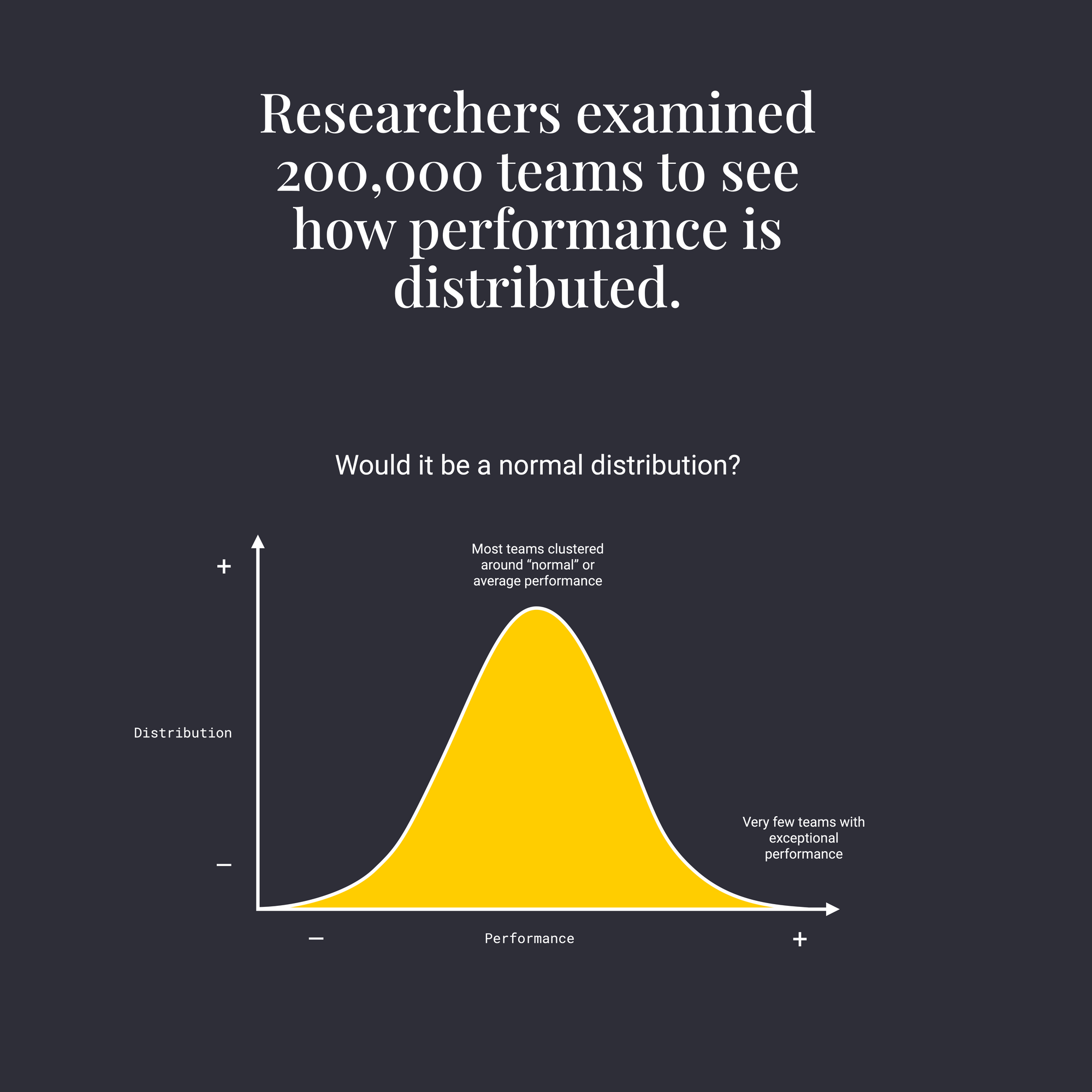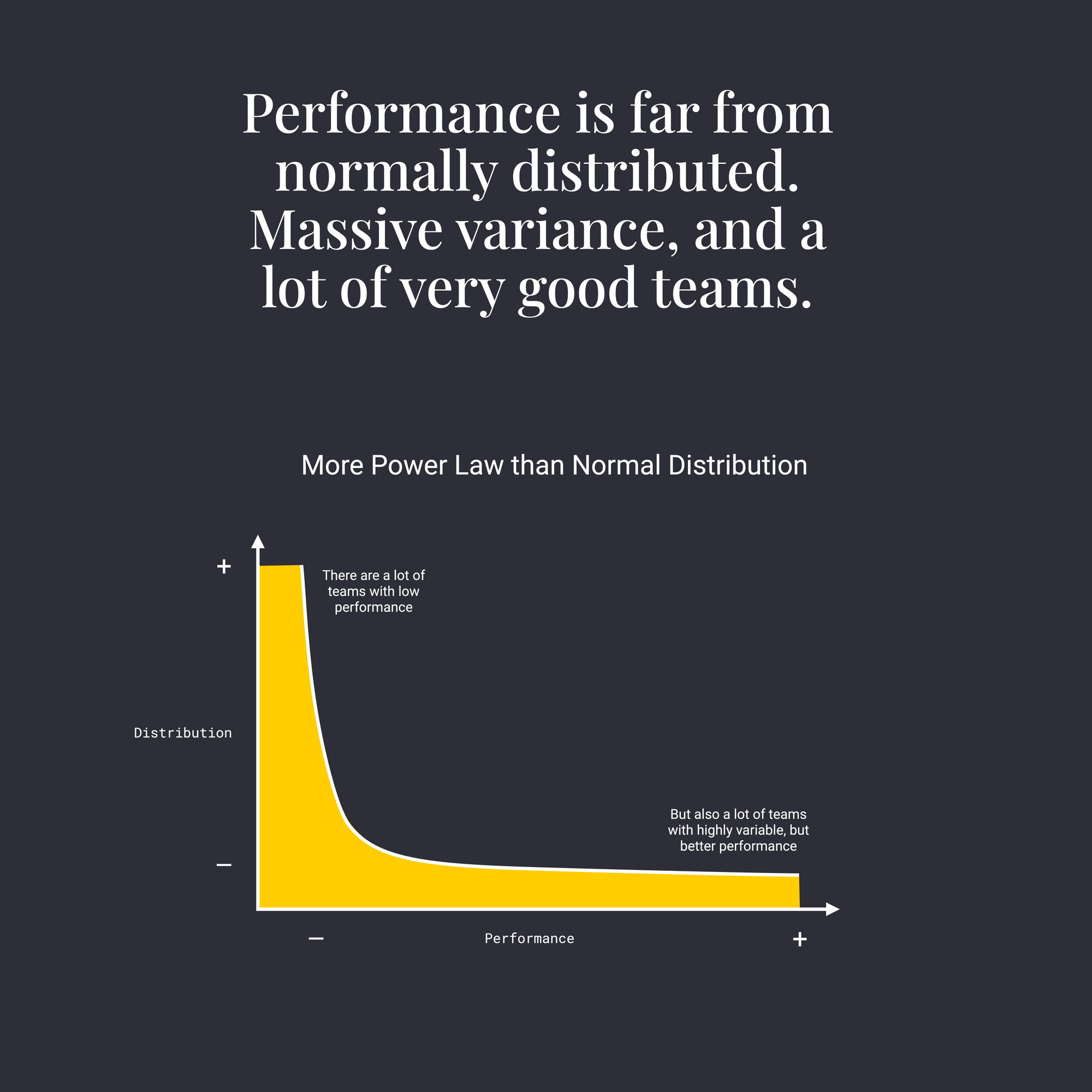The State of Teaming: Most are bad. Some are really, really good
Researchers examined +200k teams to see how performance is distributed. There's a LOT of poor-performing teams, and a lot more exceptional teams than expected!

Here's some awesome new scholarship on the state of teaming.
Team Performance: Nature and Antecedents of Nonnormal Distributions – by Kyle J. Bradley & Herman Aguinis, published in Organization Science September 8, 2022 (my birthday!)
This paper covers performance distributions across 200,825 teams.


Most teams aren't in the middle of potential outcomes. That sucks! We can change that!
Some takeaways.
🚀 The distribution in team performance isn’t normal – it looks more like a Power Law. That is, a lot of teams are bad, and a lot more teams than you would expect are very, very good. Generally speaking, this tracks with my experience. What I've observed is that most people have never worked on a high-performing team at work, and for most executives, if they've worked on one, it's a distant memory (according to this, only 21% of leadership teams are outstanding, 37% are mediocre, and 42% are poor).
So introducing the benefits of real teams to people, especially those that work at larger, more established firms without a history of this way of working, will more often than not sound preposterous or naïve. You're not wrong, and they're not either – they've just never even seen it done, let alone experienced it.
📈 Teams that are more likely to be come “star teams”:
- Most importantly: they stick together over a substantial period of time, and have limited turnover.
- Also important, but less so: they have a “star leader” – one that is exceptional both at the job the team is performing, and the teaming functions necessary to keep the team together, to help them learn, etc.
⏰ Time. It all comes back to time. I suspect there is some relationship between "star leadership" and teams' ability to stick together over time: by creating halo effects that prevent others from breaking things up; by reinforcing good behaviors within the team that hold them together over time; by giving teammates a good example of high performance that they can learn from; other things.

Comments